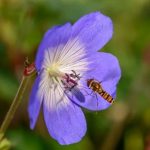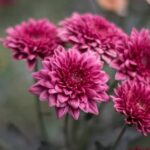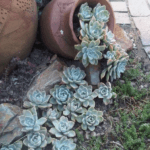In today’s article, we will explore various hedging ideas for front gardens, offering a range of options and inspiration for homeowners looking to enhance their outdoor spaces. Hedging is a popular and versatile landscaping technique that can provide privacy, security, and aesthetic appeal to front gardens.
From traditional to modern designs, there are countless ways to incorporate hedging into your garden design, and we will discuss the benefits, types of plants, design tips, maintenance advice, and creative ideas for using hedges in small spaces or different climates.
Hedging plants offer an effective way to define boundaries within a front garden while adding greenery and texture to the landscape. The use of hedges can also create a sense of enclosure and privacy without completely closing off the space from the surrounding environment. Whether you have a small urban garden or a large suburban property, there are hedging options available to suit your needs and preferences.
In the following sections, we will delve into the various aspects of front garden hedging, including the benefits of using hedges in landscaping, different types of hedging plants suitable for front gardens, designing tips and tricks to create visually appealing layouts, as well as maintenance and care guidelines to keep your hedges healthy and vibrant.
Whether you’re interested in incorporating edible hedge plants or exploring creative designs for small spaces, this article will provide valuable insights into choosing the perfect hedging ideas for your front garden.
Benefits of Using Hedges in Front Gardens
Using hedges in front gardens offers a range of benefits that make them an attractive option for homeowners looking to enhance their outdoor space. From adding privacy and security to creating a visually appealing boundary, the advantages of using hedges go beyond just their aesthetic appeal.
Privacy and Security
One of the key benefits of using hedges in front gardens is the privacy and security they provide. By creating a natural barrier around the perimeter of the property, hedges help to deter unwanted intruders and prying eyes, giving homeowners peace of mind. This can be particularly important for those living on busy streets or in urban areas where privacy can be limited.
Environmental Benefits
Hedges also offer environmental benefits, acting as natural filters for air pollution by trapping dust and particles from passing vehicles. Additionally, they provide habitat for wildlife such as birds, insects, and small mammals, contributing to biodiversity in urban areas.
Visual Appeal
In addition to their practical benefits, hedges add visual appeal to front gardens, enhancing the overall look of the property. Whether neatly trimmed or left to grow wild, hedges can create a sense of structure and formality or add a touch of natural charm to the garden. With various types of hedging plants available, homeowners can choose species that complement their home’s architectural style and landscape design.
Overall, the use of hedges in front gardens offers numerous advantages ranging from practical benefits such as privacy and security to environmental benefits and aesthetic appeal. By carefully selecting the right type of hedging plants and maintaining them properly, homeowners can enjoy a beautiful and functional front garden for years to come.
Types of Hedging Plants for Front Gardens
When it comes to choosing the right hedging plants for your front garden, there are many options to consider. Each type of plant has its own unique characteristics and benefits, so it’s important to select the ones that best suit your garden’s climate, aesthetic, and maintenance needs. Here are some popular types of hedging plants for front gardens:
- Boxwood: This classic choice is known for its dense foliage and ability to be pruned into various shapes. It thrives in both sun and shade, making it a versatile option for any front garden.
- Privet: Privet hedges are admired for their fast growth and hardiness. They can withstand heavy pruning and are known for their attractive white flowers in the spring.
- Lavender: For a more fragrant option, consider using lavender as a hedge in your front garden. Not only does it provide beautiful purple blooms, but it also attracts pollinators like bees and butterflies.
- Yew: Yew hedges are valued for their evergreen foliage and tolerance of different soil conditions. They can be shaped into formal designs or left to grow naturally for a more relaxed look.
These are just a few examples of the many types of hedging plants available for front gardens. It’s important to research each option thoroughly to determine which will thrive best in your specific location and meet your design preferences.
In addition to considering the aesthetics and practicality of each plant, be sure to also think about how they will complement the overall style of your home’s exterior. The right hedging plants can elevate your front garden’s appearance while adding privacy, structure, and natural beauty. By carefully selecting the types of hedging plants that work best for you, you can create a welcoming and visually appealing entrance to your home.
Designing With Hedging
When it comes to designing your front garden with hedges, there are a few tips and tricks that can help you achieve the perfect look for your outdoor space. Whether you’re looking to create a formal and structured entrance or a more relaxed and natural feel, the right hedge design can make all the difference.
Here are some tips and tricks for designing with hedges in your front garden:
- Consider the style of your home: The style of your home can greatly influence the type of hedge design that will work best for your front garden. For traditional or formal homes, consider using clipped hedges in geometric shapes such as squares or rectangles. For more casual or cottage-style homes, informal and natural-looking hedges may be more suitable.
- Use different types of hedges for visual interest: Mixing different types of hedging plants can add texture, color, and depth to your front garden. Consider incorporating a mix of evergreen and deciduous hedges, as well as different heights and shapes to create visual interest.
- Define pathways and borders: Hedges can be used to define pathways, borders, and outdoor living spaces in your front garden. Use low-growing hedging plants to line paths or separate different areas within the garden, creating a sense of structure and organization.
By following these tips and tricks for designing with hedges, you can create a beautiful and well-defined front garden that enhances the overall aesthetic of your home while providing practical benefits such as privacy and noise reduction.
Maintenance and Care for Front Garden Hedges
Front garden hedges can add beauty and structure to the landscape, but they require regular maintenance and care to keep them looking their best. Proper maintenance not only ensures that your hedges stay healthy and lush, but it also helps in controlling their growth and shaping them according to your desired design.
One of the most important aspects of hedge maintenance is regular pruning. Trimming your hedges at least once a year, or as needed, will promote new growth and help maintain their shape. It’s also essential to remove any dead or diseased branches to prevent the spread of disease throughout the hedge.
In addition to pruning, watering and fertilizing are crucial for the health of front garden hedges. Water your hedges deeply at least once a week, especially during dry periods. Consider using slow-release fertilizer in the spring to provide your hedges with the nutrients they need to thrive. Lastly, keeping an eye out for pests and diseases is vital in maintaining healthy front garden hedges.
| Maintenance Tips | Benefits |
|---|---|
| Regular pruning | Promotes new growth |
| Watering and fertilizing | Keeps hedges healthy |
| Pest and disease control | Prevents damage to hedges |
Creative Hedging Ideas for Small Front Gardens
Front gardens come in all shapes and sizes, and for those with limited space, finding creative hedging ideas can make a big impact. When it comes to small front gardens, it’s essential to choose hedging plants that not only fit the scale of the space but also provide visual interest.
One popular option for smaller front gardens is using dwarf varieties of traditional hedge plants, such as boxwood or privet, which can be neatly trimmed to maintain a compact size.
In addition to dwarf varieties, consider alternative options such as using flowering shrubs or ornamental grasses for a more modern and unconventional look. For example, planting a low-growing flowering shrub like dwarf alberta spruce or pink fairy rose along the perimeter of the garden can add color and texture without overwhelming the space. Ornamental grasses like blue fescue or Japanese bloodgrass are also great choices for adding movement and visual appeal to small front gardens.
When designing with hedges in small front gardens, it’s important to keep in mind the overall aesthetic and function of the space. Using curved or zig-zagging hedges can create a sense of depth and dimension, making the garden appear larger than it actually is. Incorporating different textures and heights into the design can also help maximize visual interest in a limited area.
| Hedging Plant | Characteristics |
|---|---|
| Dwarf Boxwood | Compact size, easy to trim |
| Pink Fairy Rose | Low-growing flowering shrub |
| Blue Fescue | Ornamental grass with fine texture |
Hedging Ideas for Front Gardens in Different Climates
When it comes to choosing hedging ideas for front gardens, it is important to consider the climate in which you live. Different climates can impact the health and growth of hedging plants, so it is essential to select the right types of plants that are suitable for your specific region. From hot and dry climates to cold and wet environments, there are various hedging options that can thrive in different conditions.
Hot and Dry Climates
In hot and dry climates, such as those found in desert regions, it is important to choose hedging plants that are drought-tolerant and can withstand high temperatures. Some great options for these climates include varieties of boxwood, rosemary, lavender, and oleander. These plants have adaptability to arid conditions while still providing the structure and beauty that hedges offer.
Cold and Wet Climates
For front gardens located in cold and wet climates, evergreen hedges like yew, holly, or juniper can withstand harsh winter conditions while still providing year-round interest. These plants are also known for their resilience in damp soil and cooler temperatures, making them ideal choices for regions with long winters or frequent rainfall.
Moderate Climates
In moderate climates where temperatures are neither too extreme nor too mild, a wide variety of hedging plants can thrive. From classic options like privet or boxwood to more unique choices like bamboo or flowering quince, homeowners have a plethora of options when it comes to creating attractive hedges in their front gardens. Consider factors such as soil type and sun exposure when selecting the best hedge for your garden’s specific location.
Ultimately, understanding the climate conditions in your area is crucial when exploring hedging ideas for front gardens. By selecting plants that are well-suited to your region’s climate, you can create a beautiful and thriving hedge that enhances the aesthetic appeal of your front garden while requiring minimal maintenance.
Incorporating Edible Hedging Plants in Front Gardens
When it comes to front garden hedging, we often think of using plants for their visual appeal and structural benefits. However, incorporating edible hedging plants into your front garden can serve a dual purpose, providing both aesthetic value and a source of fresh produce. From fruit-bearing shrubs to aromatic herbs, there are plenty of options for adding edible elements to your hedges.
One popular choice for edible hedging plants is the blueberry bush. Not only do these bushes produce delicious berries for you to enjoy, but they also offer beautiful foliage and delicate flowers, adding color and texture to your front garden.
Other options include dwarf fruit trees such as apple or pear varieties, which can be trained into formal hedges and provide seasonal fruits. When selecting edible hedging plants, it’s essential to consider their growth habits and maintenance needs, as well as their compatibility with the overall design of your front garden.
In addition to traditional hedging plants, incorporating herbs like rosemary, lavender, or thyme into your hedge design can add fragrance and culinary functionality to your front garden. These versatile plants not only look attractive when pruned into a formal hedge but also offer the convenience of fresh herbs right outside your door.
Edible hedging plants can be an excellent choice for those looking to create a multifunctional and sustainable front garden that combines beauty with practicality. When planning your hedge design, consider how incorporating edible elements can enhance the overall appeal and functionality of your outdoor space.
Conclusion
As we’ve seen, hedging can be a fantastic way to add both functionality and beauty to your front garden. From adding privacy and security to creating visual interest through different textures and colors, hedges are a versatile option for any front yard. With the wide variety of hedging plants available, there’s no shortage of options for those looking to enhance their outdoor space.
When choosing the perfect hedging ideas for your front garden, it’s important to consider your specific needs and preferences. Whether you’re looking for low-maintenance options, want to incorporate edible plants, or need something that will thrive in a particular climate, there are plenty of choices to explore.
By taking the time to research different types of hedging plants and design techniques, you can create a front garden that not only looks beautiful but also serves as a practical and valuable addition to your home.
In conclusion, whether you have a large or small front garden, live in a hot or cold climate, or simply want to add some greenery and structure to your outdoor space, there are boundless opportunities when it comes to hedging ideas for front gardens.
By considering the benefits of using hedges, exploring different types of hedging plants, learning about design techniques, and understanding maintenance requirements, you can make an informed decision that aligns with your vision for the perfect front garden.
With the right choice of hedging ideas, you can transform your front yard into a welcoming and charming space that reflects your personal style and enhances the overall curb appeal of your home.
Frequently Asked Questions
What Are the Best Hedges for a Front House?
The best hedges for a front house are typically those that are low-maintenance and visually appealing. Popular options include boxwood, privet, and yew. These hedges provide structure and privacy to the front yard.
What Is the Cheapest Hedge to Grow?
When considering the cheapest hedge to grow, common choices include privet, barberry, or forsythia. These plants are relatively inexpensive to purchase and easy to propagate from cuttings, making them cost-effective options for creating a hedge.
What Is the Fastest Growing Hedge?
If speed of growth is the priority, then leylandii or laurel hedges are among the fastest-growing options available. These hedges can quickly establish themselves and provide the desired privacy and structure in a relatively short period of time. However, it’s important to carefully maintain these fast-growing hedges to prevent them from becoming overgrown.

Welcome to my gardening blog! I am passionate about plants and enjoy sharing my knowledge and experiences with others. In this blog, I will write about everything related to gardening, from tips on how to get started to updates on my own garden projects.





